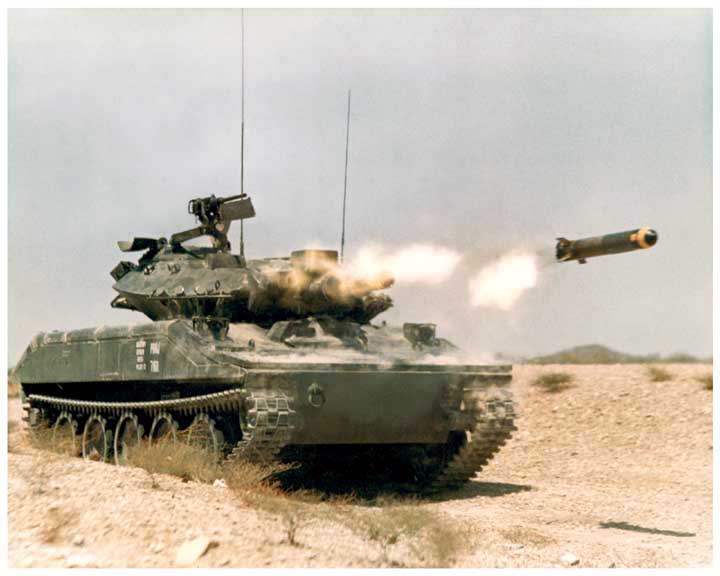

Airborne forces face a problem whenever they have to jump behind enemy lines — whether it’s to seize an enemy airfield or to take and hold territory.
The paratroopers can’t bring their own armor support, because America doesn’t currently have an airborne-certified tank or large armored vehicle. (The Stryker and the Light Armored Vehicle have undergone successful airdrop tests, but neither has been certified).
But it wasn’t always this way. During the Cold War, Airborne forces relied on the M551 Sheridan, an Airborne-capable light tank first fielded in 1969.

The Sheridan was a replacement for the World War II-era Mk. VII Tetrarch tank and the M22 Locust Airborne tank. The Tetrarch was a British glider-capable light tank and the M22 was an American tank custom-built for glider insertion.
The M551, unlike its predecessors, was airdrop-capable, meaning it could be inserted using parachutes instead of gliders. The tank was also used with the Low-Altitude Parachute Extraction System, an airdrop system that allowed the U.S. to drop the tanks from a few feet to a few dozen feet off the ground.

The Sheridan was crewed by four people and weighed 16 tons, light enough that it could actually swim through the water. It was powered by a 300-hp diesel engine and could hit approximately 45 mph. It could travel 373 miles between fill-ups.
The tank used an experimental 152mm gun that could fire missiles or tank rounds. Even its tank rounds were experimental, though — they used a combustible casing instead of the standard brass casings.

The Sheridan served well in Vietnam and Panama. During Operation Just Cause, it was even airdropped into combat, allowing paratroopers to bring their own fire support to the battlefield.
The tank’s main gun could inflict serious damage at distances of up to 2,000 feet, allowing it to punch out enemy bunkers from outside the range of many enemy guns.
Unfortunately, the light armor of the Sheridan posed serious issues. Some Sheridans were pierced by enemy infantry’s heavy machine guns, meaning crews had to be careful even when there was no enemy armor or anti-armor on the field. Worse, the main gun started to develop a reputation as being unreliable.

Firing the main gun knocked out the electronics for the longer-range missile, meaning that a tank firing on bunkers or enemy armor at close range would usually lose their ability to punch targets at long range. And there was no way to avoid this issue as the Shillelagh missile couldn’t hit targets at less than 2,400 feet.
The only way for an M551 to punch at close range was to give up its capability at long ranges.
By 1980, most cavalry units were moving to the M60 Patton Main Battle Tank, which was actually introduced before the Sheridan. The Patton featured heavier armor, more power, and a more reliable gun. It had also just been upgraded with new “Reliability Improved Selected Equipment,” or “RISE.”

According to an Army history pamphlet, one cavalryman told the Stars and Stripes, “We can get the job done with the Sheridan, but most cavalrymen would rather have the tank.”
The airborne forces would keep the Sheridan through 1996, partially because they had no other options. A number of potential replacements were canceled and modern airborne forces just make do without true armored support.
The Army is, once again, looking at new light tanks or heavy-armored vehicles to support paratroopers. The new solution could be another custom-built tank, like the Sheridan. But as of summer 2016, its specifications were up in the air. It just has to be capable of an airdrop, and it has to get the job done.
